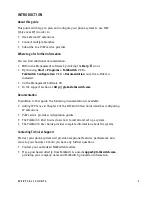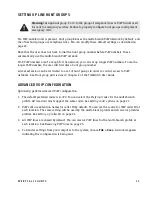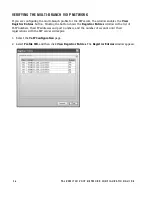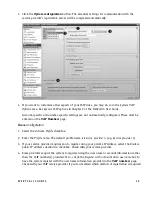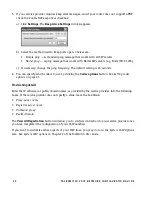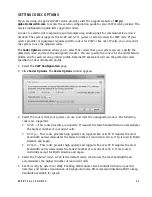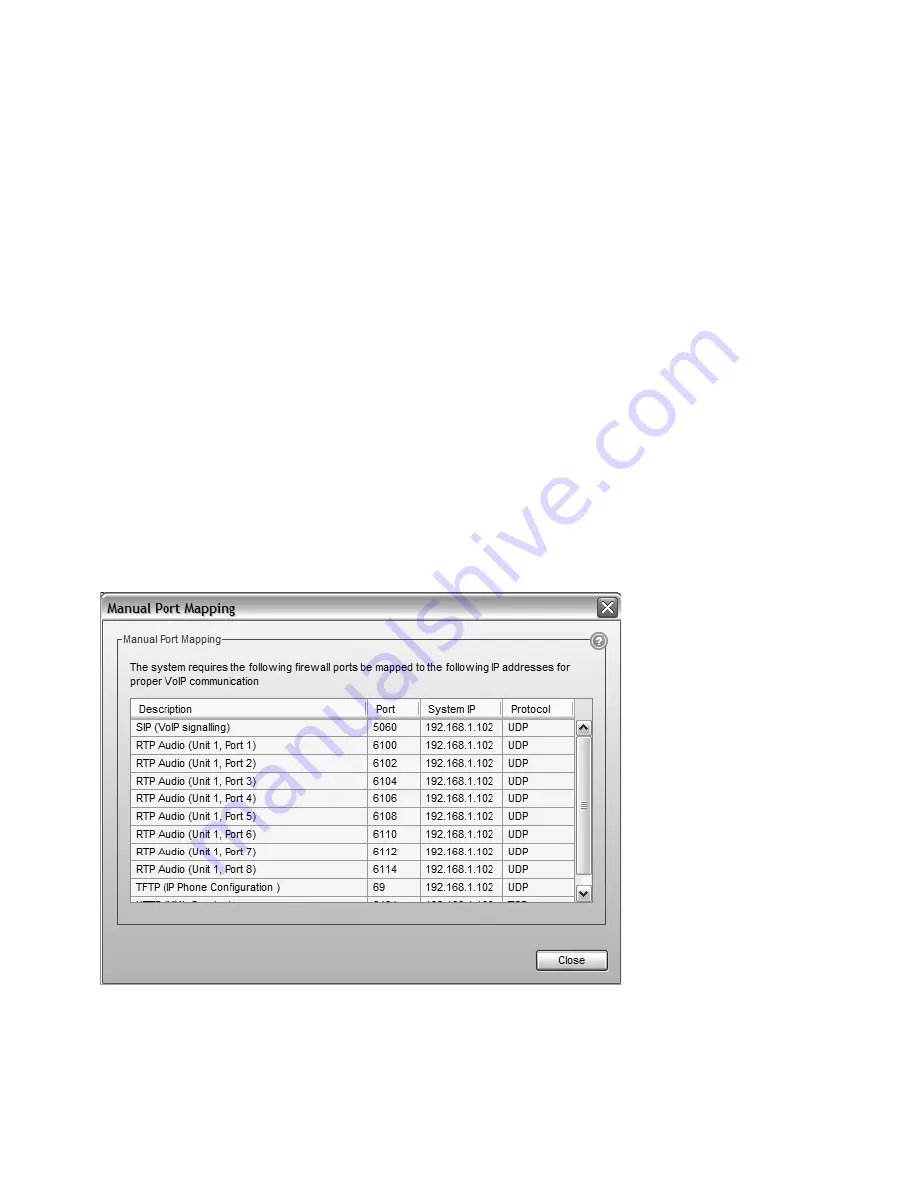
6
T A L K S W I T C H V O I P N E T W O R K C O N F I G U R A T I O N G U I D E
CONFIGURING THE ROUTER
The
Router Port Forwarding
area of the
IP Configuration
page displays the type of gateway device
(i.e. the type of router), the IP address of the gateway (i.e. router), and whether router configuration
is required.
A router is a gateway between the local area network and the Internet. Most routers have a firewall
to block unwanted data from the Internet. For voice data to reach the phone system through the
firewall, port forwarding is required.
If you are setting up external IP extensions, a multi-branch VoIP network, or a VoIP service that
doesn’t handle port forwarding, port forwarding is required.
If port forwarding is required, and your router supports uPNP (Universal Plug and Play), ensure uPNP
is enabled. The system will use uPNP to automatically set up port forwarding, and the
Automatic
(uPNP Enabled)
link will appear. No router configuration is required.
If port forwarding is required but your router doesn’t support uPNP, or automatic port forwarding
doesn’t work, the
Manual port mapping required
link will appear. You will need to configure the
router as described below.
1. Select the
IP Configuration
page.
2. If required, click the
Manual port mapping required
link. The
Manual Port Mapping
window
appears. It lists the packet type, port number, IP address and protocol of each required port.





